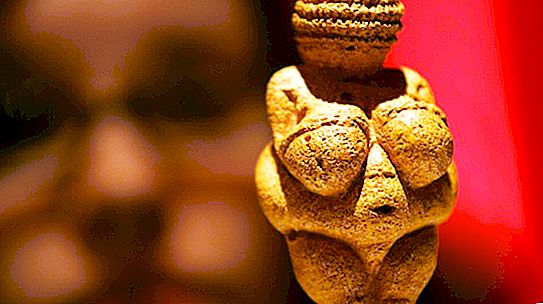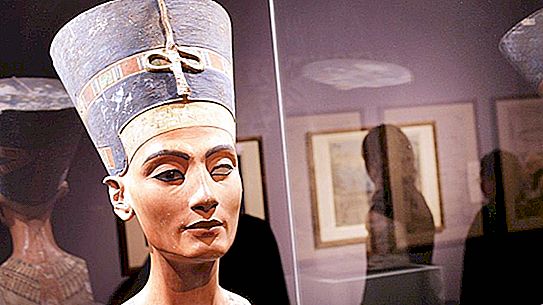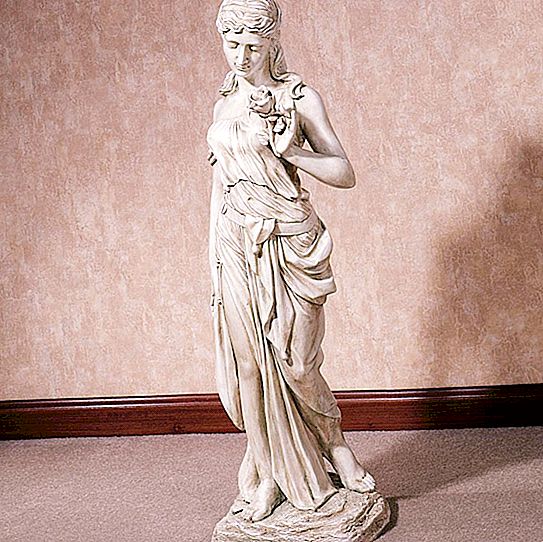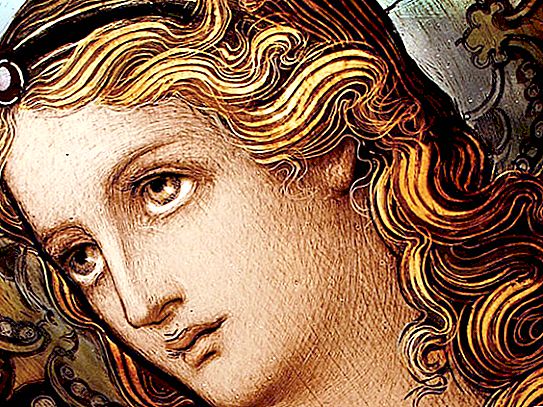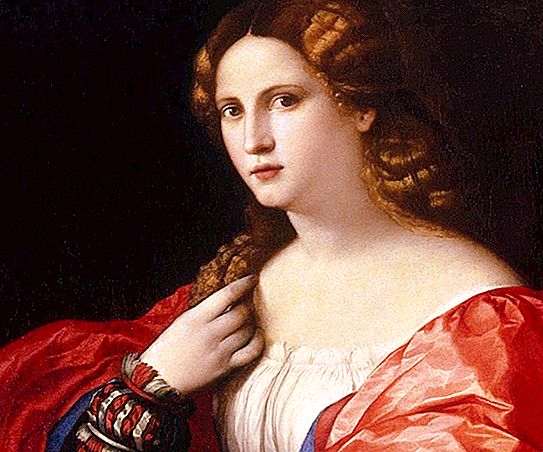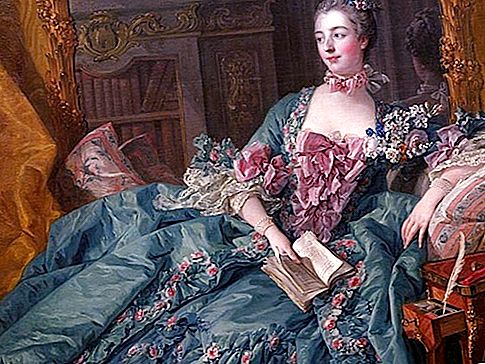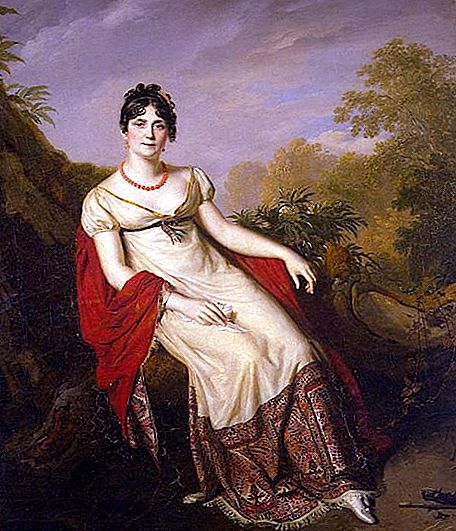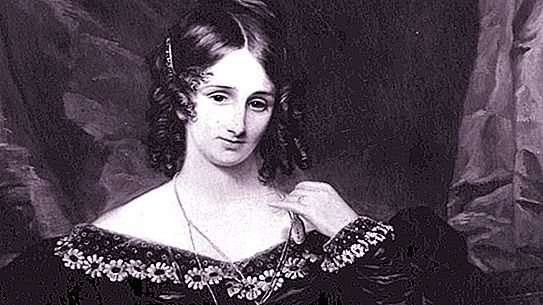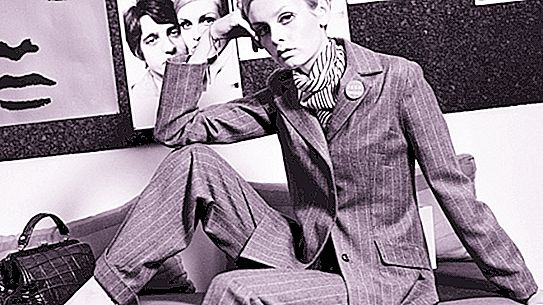Time is very demanding on the fair sex. From era to era, the ideals of female beauty have constantly changed, and ladies have tirelessly tried to fit themselves into the generally accepted framework of attractiveness. This process continues today. Moreover, at the same time in different countries, completely different types of women are considered beautiful.
Stone Age
Already in the Stone Age, people had some idea of the ideals of female beauty. This can be judged by the figurine found in 1908 during excavations in Austria. Archaeologists have concluded that it is an idol of fertility. Thus, in this era a full woman with large breasts and wide hips was considered beautiful. Such body parameters indicated that the woman is healthy, eats well and can bear and give birth to a child.
Other artifacts were later found. Namely, the sculptures of women with a more slender and elegant physique. Nevertheless, one thing remained unchanged - wide hips, which determine the ability to procreate.
Ancient Egypt
Ancient Egypt can be considered one of the most fertile eras for women. They were completely equal in rights with men, enjoyed a number of privileges and had absolute freedom. The queen of Nefertiti, whose name in translation means "the most beautiful of the beautiful, " is considered to be the real ideal of female beauty in Ancient Egypt. Based on the image of Nefertiti, one can determine the following parameters of female beauty:
- Build - slim. But we are not talking about excessive thinness.
- Long legs.
- Broad shoulders and narrow hips.
- Developed muscles.
- Big eyes of the right almond shape. Green color. To bring their eyes to the ideal, the Egyptians let them down with green and black paint.
- Puffy regular lips. Egyptians actively used lipstick.
- Hair did not play a significant role. As a rule, women shaved baldly and wore black wigs.
Interestingly, one of the greatest women of ancient Egypt, Cleopatra was not at all beautiful. She was short, had thin lips. Nevertheless, the whole world admired her. Cleopatra conquered with her charm, intelligence, education and audacity. By the way, it’s Cleopatra that can be considered the ancestor of manicure. The queen grew long nails and stained them with terracotta henna.
Ancient China
In ancient China, the ideal of female beauty was a slender, fragile figure of short stature and always with a miniature foot size. The foot should be arched in association with the young month. Surprisingly, without this, the ancient Chinese girl had practically no chance of marriage. Therefore, almost from birth, the girls were tightly bandaged with their feet or put on special wooden shoes so that the foot did not grow more than 10 cm.
Skin color is another important parameter of beauty. The ancient Chinese women were slightly swarthy. To hide this, they covered their face with a dense layer of whiteness, and a pink blush was applied to the cheekbones.
In addition to external characteristics, manners were an integral parameter of female beauty. The lady had to be restrained in words, gestures and gait. It was considered bad manners to bare teeth, and therefore women did not smile and did not laugh in public.
Ancient Greece
To make an impression of the ideal of female beauty in ancient Greece, it is enough to recall that this is the birthplace of the Olympic Games. Thus, ladies with a fit athletic physique were considered attractive. In those days, people were literally obsessed with aesthetics and even body perfection, as evidenced by the sculptures of Greek gods and goddesses. In addition, the woman was assigned not only the role of wife and mother, but also an important social role. Therefore, no one drew attention to the magnificent chest and wide hips.
If you want to personally appreciate the classic example of the ancient Greek ideal of female beauty, photos of the sculptures of ancient masters will help you with this. These are women 164 cm tall with body parameters 86-69-93 cm. They have wide enough shoulders, strong hips, small breasts and well-developed muscles. At the same time, women do not look thin. As for the face, in ancient Greece, a high forehead, wide-set eyes and a characteristic slightly humpy nose were considered attractive.
Middle Ages
It is amazing how the ideals of female beauty differ in different eras. The gloom and severity of the Middle Ages left their mark on the idea of ladies' appeal. A characteristic feature of this period is total submission to Christianity. People adhered to an ascetic lifestyle, refused excesses in food and entertainment. Everything bodily was completely denied, and the pursuit of beauty and attractiveness was considered a kind of mortal sin.
Given the deep religiosity of the time, it is logical that the image of the Virgin Mary was considered the ideal. Thus, a woman with pale skin, large eyes, heavy eyelids, a high forehead, and a small mouth was considered beautiful. To make the face look more spiritual, women shaved their eyebrows and hair on their foreheads and temples.
Particular attention was paid to the chest. It should have been small (or rather flat). For this purpose, the daughters of noble families had to wear metal plates from childhood that prevented the mammary glands from developing. This was not done only by commoners. Their magnificent bust at that time was a confirmation of ignorance and bad taste.
In the Middle Ages, thin, short women with small feet and hands were considered beautiful. To emphasize the fragile physique, women wore spacious shapeless clothes that literally hung on a thin body. Although in the Gothic era there was a fashion for a rounded bulging belly. But since the skinny ladies did not have it, I had to put special pillows under the dress.
A feature of the Middle Ages was the rejection of cosmetics. Women only occasionally used powder to make their skin pale. And hair dyeing (especially in light colors) was completely declared a wicked occupation by the church. Yes, it was useless, because, according to fashion, curls were carefully hidden under caps and capes.
Renaissance
Unlike medieval standards, the ideals of female beauty in the Renaissance were as close as possible to the natural parameters that were previously considered sinful. In fashion were long curly hair of light and fiery shades, long necks and wide rounded shoulders. A few well-fed women were considered beautiful, which made thin women wear false stomachs and hips.
Closed baggy clothes were replaced by more elegant and candid outfits. Women wore a deep neckline. And an additional evidence of the emancipation of that time is the number of paintings written from completely naked sitters. Perhaps the only thing that has not lost its relevance since the Middle Ages is the aristocratic whiteness of the skin. But during the Renaissance, a pronounced blush was also appreciated.
Baroque
Considering the ideals of female beauty in different eras, you can not ignore the Baroque. Then, puffy ladies with wide shoulders and hips, large breasts and a noticeable tummy enjoyed success. All these were signs of aristocracy and good health. Oddly enough, cellulite was a special chic.
Rococo
At the beginning of the 18th century, the ideal of female beauty for men changed radically. Substantial ladies were replaced by sophisticated and graceful girls resembling porcelain figurines. The price was average physique. A little later, there was a fashion for a thin waist. With the help of corsets, noble ladies achieved a waist circumference of 30-40 cm.
The ideal of that time was the Marquise de Pompadour. Based on her image, one can distinguish such features that were valued in the Rococo era:
- round face;
- chubby rosy cheeks;
- upturned nose;
- small puffy lips.
Particular attention was paid to hairstyles. Hairdressers built bizarre complex structures from hair, which reached up to half a meter in height. To fix the hairstyles used metal frames, wire, egg white and much more.
Classicism
Quite often, standards adopted in antiquity again became relevant. The ideals of female beauty in different eras overlap. So, in the era of Classicism, there is a certain reference to antiquity. In fashion were natural proportions. A woman should have a harmonious physique without frills (not thin, and not complete). The face should have been characterized by regular features and symmetry. Women abandoned corsets and wore elegant flying clothes decorated with lace.
Empire
The ideal of female beauty in the era of Empire was considered Josephine Beauharnais. She introduced fashion to splendor and gloss in clothes, but naturalness in appearance. Women refuse to use cosmetics, hair dye and wearing wigs. Wearing gloves is designed to protect the whiteness and tenderness of hands.
Romanticism
In the XIX century, ladies returned to the standards of the Middle Ages. But the cause of external transformations was not spirituality, but mental suffering. Readers of sentimental novels starved themselves to reduce weight to a minimum and make their waist as thin as possible. Flat chest returned to fashion. Red curls and golden hair were replaced by black curls. And, of course, the attribute of female beauty was pale skin and, oddly enough, dark circles under the eyes, as a sign of high spirituality. It is scary to think that to bring themselves to the “ideal” parameters, women voluntarily infected themselves with parasites and tuberculosis.
Modern
At the end of the XIX - beginning of the XX centuries, the Modern era, or the so-called Beautiful era, falls. A characteristic feature of that period is the hourglass silhouette. The sophistication of the waist was emphasized by a lush bust and wide hips. To create an attractive curvature of the back, women wore dresses with a lush back, and the waist was mercilessly pulled by a corset. In favor were short plump ladies.
Following the example of the ballerina Cleo de Merod, women began to wear smooth hairstyles with a straight parting, completely covering their ears, as well as loose hair. And following the example of Mata Hari, women with the help of makeup achieved the so-called demonic look. In this they were helped by crushed coal instead of shadows and carcasses. And to enhance the effect, the ladies buried their eyes with a solution of beladonna, which greatly dilated the pupils.
Twentieth century
After the end of World War I, female emancipation began. The pampered and romantic ladies were replaced by independent and self-confident women who are in no way behind men. The girls cut their hair short, pluck their eyebrows, wear short tight-fitting outfits. A tall thin girl with long legs and boyish small breasts is considered beautiful.
After the Second World War, changes are planned in the standards of female beauty. Thin divas ceased to appeal to men. Moderate fullness returns to fashion. An ideal figure is considered to be with lush hips and chest, large sloping shoulders and aspen waist. As for hairstyles, women preferred curls and voluminous hair.
After the 60s, thinness returns to fashion. This trend continues today.
